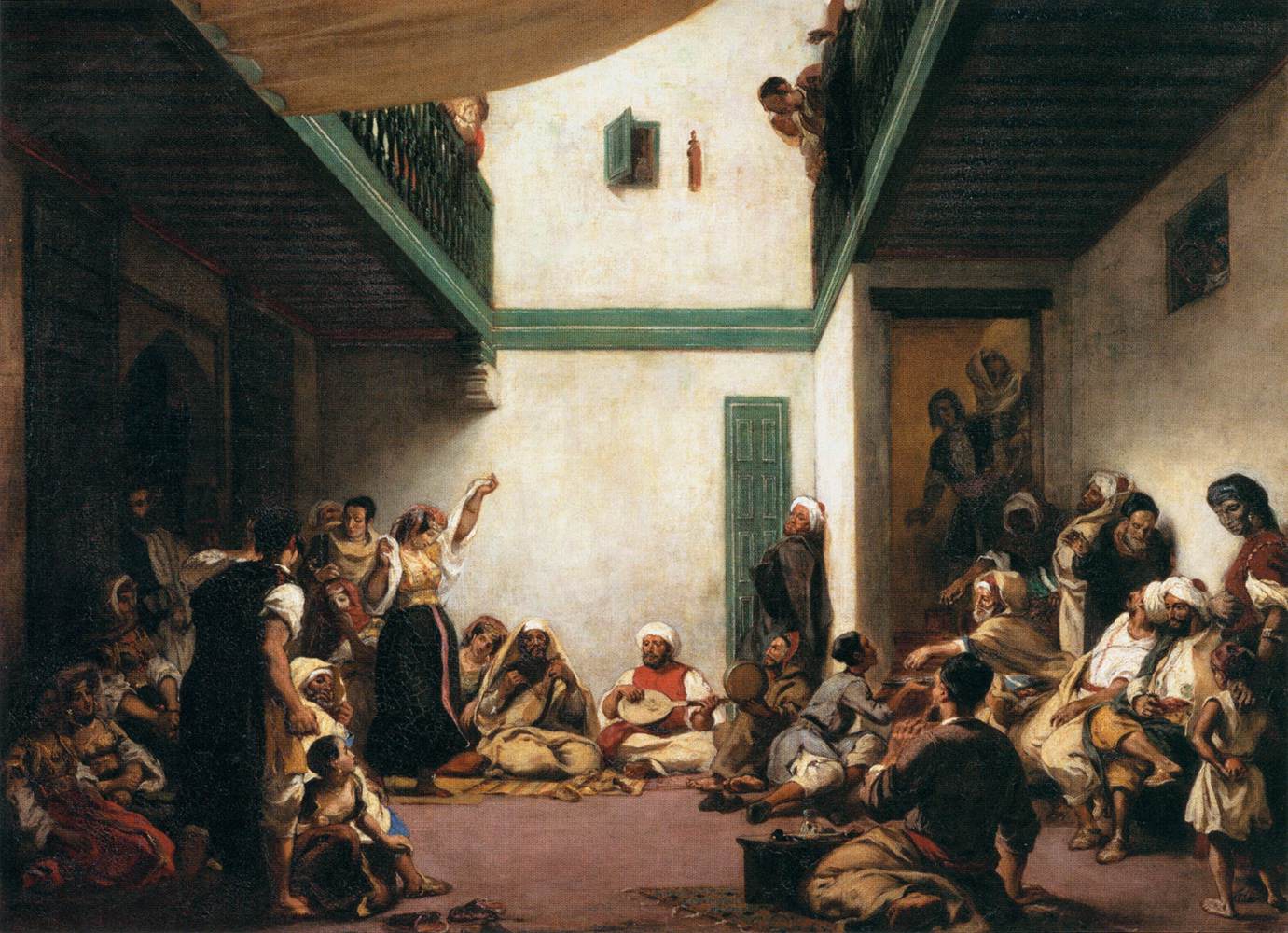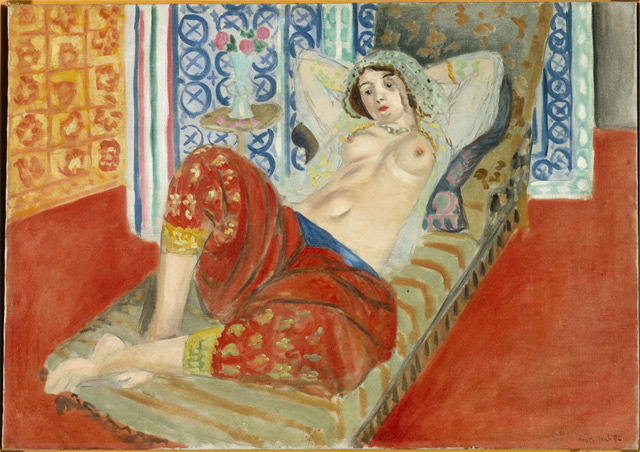WOMEN OF ALGIERS BY EUGÈNE DELACROIX
Delacroix travelled in 1832 to Algiers. During this trip, he didn’t stop drawing because he was fascinated about Algiers’ exoticism. In his trip, he could visit a harem. He was the first occidental man who could come into one. He was surprised and he made a sketch of the harem. Two years later, in his workshop in Paris he had to recompose the scene to draw the painting.
In the painting, we can see four women who are in a relaxed situation. The central figure could be the woman who is sitting more or less in the centre. Next to her, there is another woman who is kneeling, she is holding a hookah, they are smoking hashish or opium and in the right side we can see a black woman who is turning her back to the rest. On the left, we can also see a woman who is resting on a pillow and she has some exotic blankets. Besides, we can see a hookah and an opium bowl. The women are wearing exotic clothes with exotic patterns and colors.
In the background, there is a red door half-open. Near the door we can see a mirror and over the door there is a shelf with vases. We can also see exotic curtains and on the wall we can appreciate the exotic drawings over the tiles.
The painting represents the Algerian concubines in a harem. The purpose of Delacroix was also to show his archetype of the feminine perfection to the rest of the world. The women in the painting symbolize the archetype of feminine perfection. The woman on the left is submerged on darkness, representing mystery and isolation. The black woman is the servant. Her position turning her back to the rest allows the observer to introduce himself into the painting. The opium in the painting is a symbol of prostitution. Delacroix used warm colors to show the people that he was painting an oriental and exotic painting.
Eugène Delacroix was one of the most emblematic painters of Romanticism and had a strong influence on the impressionists. His paintings are famous by his good knowledge of use of the color. There are features of Romanticism on this painting: it’s a very colorful painting and with bright colors and loose brush-strokes. It’s also an exotic painting because it has many exotic elements, such as hookah and the wallpaper which give an exotic tone to this painting.
Delacroix was the only painter in his period that represented the passions of this period, such as the liberal revolutions.
His stay in Algiers was a very good thing for him because he could reflect the Islamic culture very well. His first painting describing the Islamic life was Women of Algiers and later he painted other paintings related with the Islamic culture, such as Jewish Wedding in Morocco (1837), Arab Horses Fighting in a Stable (1860), The Lion Hunt (1856-1861), and Arab Saddling his Horse (1855). These paintings and the Women of Algiers shared an important relation. All are describing the Islamic Culture and the life in Algiers.
Jewish Wedding in Morocco
Arab horses fighting in a stable
In 1849, Delacroix painted another version of Women of Algiers which is more or less similar to the original version, although the setting is less thorough. Alfred Bruyas bought this version, which is now in the Museum Fabre, Montpellier
Henri Matisse painted some paintings inspired on Delacroix’s painting. For example, Matisse painted Odalisque with Red Pants inspired on Women of Algiers.
Women of Algiers was also an inspiration for Fernand Léger to paint Three women in 1921.
It was also a big influence for many Picasso’s paintings. He painted a series of fifteen variations on Delacroix's Women of Algiers between 13 December 1954 and 14 February 1955.
Some examples of their variations of Women of Algiers by Picasso are:
Glossary:
- Hookah-> narguile, cachimba o pipa de agua
-Harem->Harén
-Concubines->Concubinas
-Opium->Opio
-“The archetype of feminine perfection”-> El ideal de la perfección femenina
-Oil on canvas-> Óleo sobre lienzo
-Setting->Entorno
- Pattern ->Estampado
- Thorough->elaborado
The sources that I’ve used are:



.jpg)








3 comments:
Great work María. I like it a lot.
Hello María,
Remember that the title of the painting has to be written in Italic font.
Your idea of including the glossary is very good. I've discovered many things I didn't know checking your painting: for example, Picasso's series based on this painting and Asia Djebar's book.
You've done a very good work. I'll give you 9.5 points.
See you!
Ok, Paqui, I have corrected...See you!!
Post a Comment